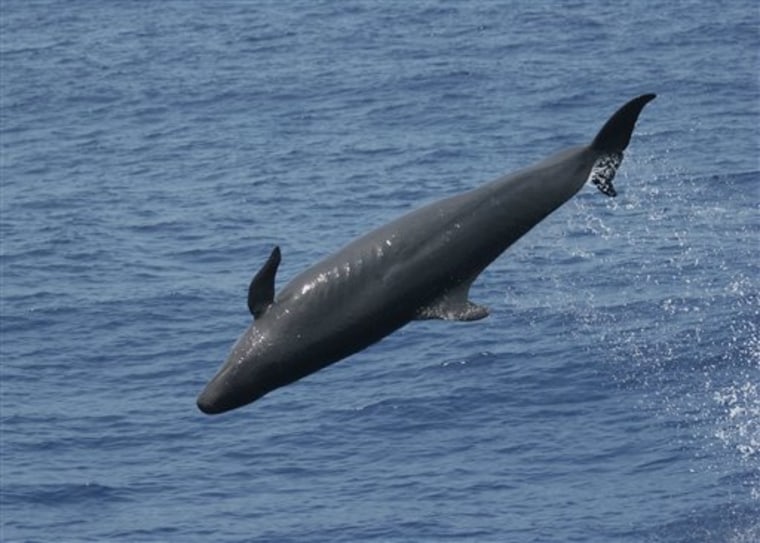The population of false killer whales in waters close to Hawaii appears to have dramatically declined over the past 20 years, a new study says.
It's not known for sure why the dolphin species is decreasing, but the academic paper says the reason likely has to do with declining food supplies and how the mammals are getting caught and injured on the longline fishing lines that stretch as many as 50 miles long from some commercial fishing vessels.
The report's publication in this month's edition of Pacific Science comes weeks after environmental activists sued the federal government for allegedly failing to prevent longline fishing fleets from accidentally capturing the animals off Hawaii.
False killer whales can grow as long as 16 feet and weigh over one ton. They look like killer whales, but they're almost completely black instead of black and white.
They're found in tropical and temperate waters worldwide, including Maryland, Japan, Australia and Scotland.
Robin Baird, one of the study's co-authors, estimates about 120 false killer whales currently live in waters up to 60 miles off Hawaii's coasts.
Researchers who conducted an aerial survey of waters up to 34 miles offshore in 1989 counted 470 individuals in one group of false killer whales. They also found groups of 380 and 460 individuals.
In contrast, researchers saw no false killer whales during aerial surveys of the same area in 2000 and 2003.
Baird, a marine biologist with Cascadia Research Collective in Olympia, Wash., said several surveys analyzed for the paper don't say much about the false killer whale population when viewed individually. But taken together the data make a convincing case, he said.
The data "came together to present really a much more alarming picture," he said.
Baird suspects a combination of longline fishing, declining prey, and environmental toxins are hurting the dolphins.
False killer whales tend to get caught by longline fishing because they eat the fish fishermen have snagged for human consumption: yellowfin tuna, mahimahi, and ono.
The dolphins also have less food to eat because heavy fishing by humans has depleted stocks of yellowfin tuna and other fish they like, including mongchong, albacore tuna and swordfish.
